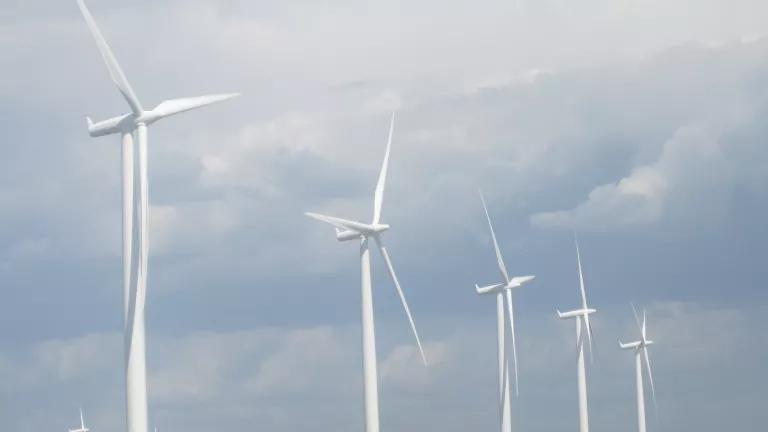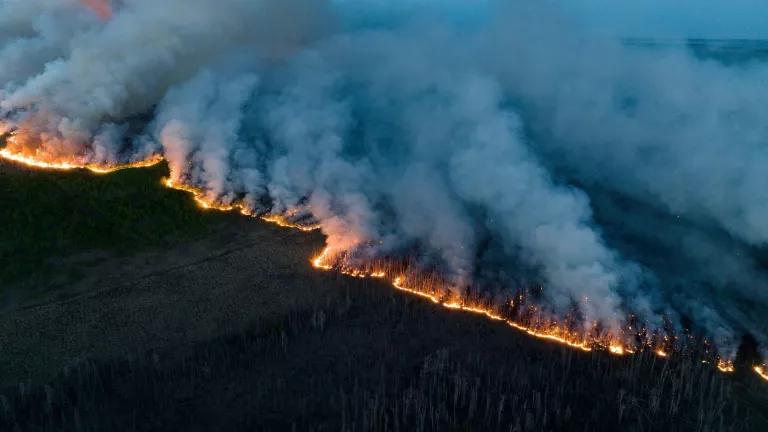New Report: Climate Change Harms Pennsylvanians’ Health
State and federal leaders must move quickly to help Pennsylvania residents stay healthy, productive, and safe in the face of current and future climate risks.

Pennsylvania was smoking hot last month. While just one daytime high temperature record was broken from July 1 through July 29, locations across the state broke 46 records for high overnight temperatures and tied 44 other records as humid conditions locked in dangerous nighttime heat.
The bad news is that this kind of heat is just a taste of things to come. Or, as television writer and producer Carter Bays quipped, this could be “the coolest summer of the next 125 years.”
What does that mean for the health of Pennsylvanians?
Plenty, as NRDC’s new report about climate-related health harms in the Keystone State shows. Here are just a few examples.
Extreme heat is bad for Pennsylvanians’ health
In Pennsylvania, average annual temperatures have climbed about 1.4 degrees Fahrenheit since 1895, and summers are getting longer, hotter, and more dangerous as the climate crisis grows more dire.
Between 1997 and 2004, an average of 50 people per year in Pennsylvania died from extreme heat, making it more lethal in the state than all other natural disasters combined. Heat and humidity also pose a range of nonfatal threats to Pennsylvania residents, from minor illnesses such as heat cramps to more severe conditions like heat-related heart problems and heatstroke.
Pennsylvania has had relatively few reports of heat-related deaths and illnesses this summer. That was true even after the brutal heat wave in the middle of July, which led to one reported death in Philadelphia and more than 50 heat-related illnesses in Wilkes Barre, Erie, Johnstown, Edgartown, Ephrata, and Conewago Township.
But these reports almost certainly underestimate the heat wave’s true toll on Pennsylvanians. That’s because there is often a delay between exposure to high temperatures and heat-related illnesses and deaths, and not everyone who gets sick winds up in an emergency room or hospital bed. Furthermore, death certificates often don’t list extreme heat as a cause of death, even when high temperatures contribute to a heart attack, stroke, or other heat-sensitive condition.
Unfortunately, neither the federal government nor the Keystone State has a comprehensive system to track the health effects of heat, making it harder to quickly spot problems and intervene to fix them.
Heavy rainfall and floods are getting worse in Pennsylvania
More frequent and severe flooding brings a myriad of health harms, including indoor mold, waterborne disease outbreaks, disruptions to emergency health services, and flooded roadways.
Allergy seasons are getting longer and more severe
The spring allergy season is starting earlier and getting more severe across the Northeast as average temperatures climb. More pollen in the air increases the risk of severe asthma attacks, which could send many more of the 1.2 million Pennsylvanians diagnosed with asthma to emergency rooms each year.
And don’t forget about infectious diseases …
Warmer and wetter conditions are setting the stage for increases in cases of Lyme disease, West Nile virus, and other diseases spread by ticks and mosquitoes. Pennsylvania’s population of Asian tiger mosquitoes—a vector for West Nile—is growing, staying active over more of each year, and expanding into more and more counties.
Pennsylvania needs ambitious action on two complementary fronts to avoid the most devastating impacts of climate change.
Slash carbon pollution fueling deadly climate hazards
This fall will present opportunities for Pennsylvania to reduce climate pollution from both the power sector (the largest source of emissions in the state) and the transportation sector (the largest source nationwide).
Although the Three Mile Island nuclear plant is scheduled to close, a renewed push to subsidize the state’s four other nuclear plants is expected. Legislators increasingly see a system to cap and limit carbon pollution, such as the Regional Greenhouse Gas Initiative, as a more attractive option than direct subsidies. Higher renewable energy goals in the state’s Alternative Energy Portfolio Standards Act are also on the table.
And Pennsylvania could take a significant step toward reducing transportation emissions by passing the Clean Transportation Infrastructure Act (introduced as SB 596), which would drive the development of more charging infrastructure for electric vehicles.
Expedite climate adaptation planning and implementation across the state
Philadelphia’s Department of Public Health deserves some credit for the low death toll during the July heat wave. The City has a multi-pronged Heat Health Emergency plan and prioritizes help for the neighborhoods most vulnerable to extreme heat.
Many more of these kinds of programs are vital to cope with the climate crisis. But the state’s brand new Climate Action Plan merely outlines broad potential strategies, not specific, actionable plans. A lot more work is needed to convert the recommendations into reality.
Climate change is already hurting Pennsylvanians. State and federal leaders must move quickly to help state residents stay healthy, productive, and safe in the face of current and future climate risks.




